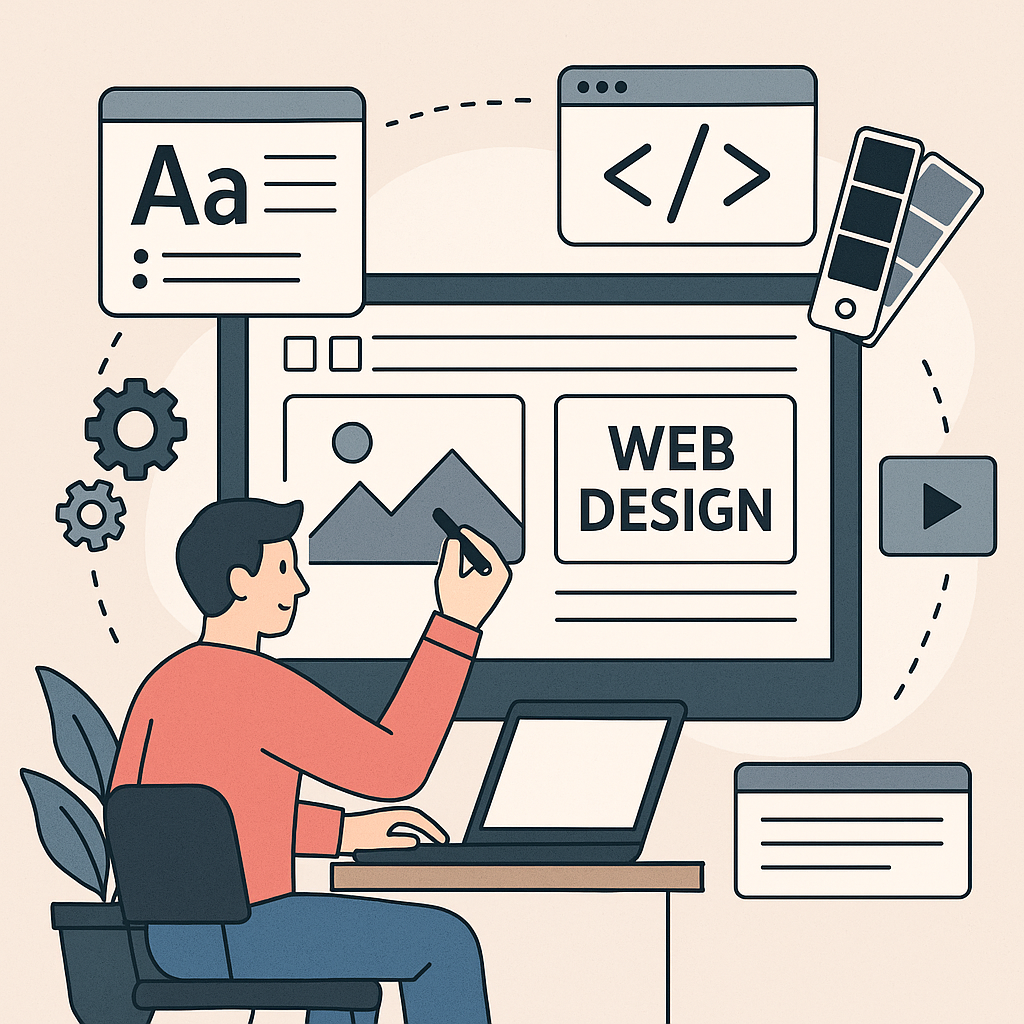
In the digital age, a business without a strong online presence is like a ship lost at sea. One of the most vital aspects of your online strategy is web design. A well-designed website not only attracts visitors but also converts them into customers. However, web design is not just about aesthetics. It must be functional, SEO-friendly, and highly readable to deliver real results.
In this blog, we will explore the essentials of modern web design, its connection with SEO (Search Engine Optimization), and how to ensure your site offers the best readability to engage and retain visitors.
Why Web Design Matters More Than Ever
Your website is the first impression of your brand. Users judge your credibility within seconds of landing on your homepage. A professional, clean, and intuitive web design can boost your reputation and encourage users to explore more.
Here’s why web design is critical:
- First Impressions Count: 94% of first impressions are design-related.
- User Experience (UX): Poor design frustrates users, leading to high bounce rates.
- Trust and Credibility: A dated or cluttered design signals unprofessionalism.
- Conversion Optimization: Strategic design elements guide users toward desired actions.
Great web design isn’t just eye candy—it directly impacts your business goals.
How Web Design Affects SEO
Search engines like Google don’t just look at keywords—they analyze the structure, performance, and usability of your website. A poorly designed website can significantly hurt your search rankings.
1. Site Structure and Navigation
A clear and logical structure helps search engines crawl and index your pages effectively. Implement a hierarchy using:
- Main categories
- Subcategories
- Internal linking
- A well-organized menu
Ensure every page is just a few clicks away from the homepage to enhance crawlability.
2. Mobile Responsiveness
With more than half of all web traffic coming from mobile devices, Google prioritizes mobile-friendly sites. Your web design must adapt to all screen sizes without compromising usability.
3. Loading Speed
Slow-loading websites frustrate users and rank poorly on Google. Optimize images, minimize code, and use caching to speed things up. Tools like Google PageSpeed Insights can help evaluate and fix issues.
4. Clean Code and HTML Tags
Use semantic HTML5, proper header tags (H1, H2, H3), and meta descriptions. These elements help search engines understand your content and improve on-page SEO.
Readability: The Secret Weapon of Good Web Design
You can have a beautiful and SEO-optimized site, but if users can’t understand or engage with the content, it won’t convert. Readability plays a crucial role in keeping users on your site and encouraging them to act.
Key Aspects of Readability in Web Design:
1. Typography
Choose clean, legible fonts and maintain a consistent style throughout your website. Avoid overly decorative fonts and use adequate line spacing.
2. Contrast and Color Schemes
Text must contrast well with the background. High-contrast designs are easier to read, especially for users with visual impairments.
3. Short Paragraphs and Bullet Points
Walls of text can scare readers away. Break content into bite-sized paragraphs, use bullet points, and include headers to guide readers through your content.
4. Visual Hierarchy
Use headings, subheadings, images, and whitespace to direct user attention. The more scannable your content, the better your chances of retaining visitors.
5. Accessible Language
Write in a conversational tone. Avoid jargon and write at a reading level that’s suitable for your audience—generally 6th to 9th grade for the web.
Best Practices to Combine Web Design, SEO, and Readability
To create a truly effective website, you must strike the perfect balance between design, SEO, and content clarity. Here are some best practices:
✅ Use SEO-Friendly URLs
Make URLs short, keyword-rich, and descriptive (e.g., www.example.com/web-design-tips).
✅ Optimize Images
Use relevant file names, alt text for SEO, and compressed images to enhance speed.
✅ Implement Schema Markup
Structured data (like reviews, products, FAQs) helps Google understand your content better and can improve visibility in search results.
✅ Include CTAs (Calls-to-Action)
Strategically place buttons like “Get a Quote” or “Contact Us” to guide users toward action.
✅ Keep It Simple
A minimalistic design often works better. It allows your content to shine and avoids overwhelming the visitor.
Tools and Platforms to Boost Your Web Design Efforts
Whether you’re a beginner or a professional, tools can make your design process easier and more effective:
- WordPress – Highly customizable and SEO-friendly CMS.
- Elementor – Drag-and-drop page builder for non-coders.
- Figma/Adobe XD – Excellent for UI/UX design prototypes.
- Yoast SEO – WordPress plugin that guides on-page SEO best practices.
- Google Analytics – Tracks user behavior and helps refine design strategy.
Conclusion: A Website Designed for Success
Modern web design is not just about creating a good-looking website—it’s about developing a platform that performs. By incorporating SEO best practices and focusing on readability, you can craft a website that ranks on Google and converts visitors into loyal customers.
Remember, the most successful websites are built on the foundation of:
- User-centered design
- Technical SEO optimization
- Clear and readable content
Want a professional web design solution that ranks high and reads even better? so learn the things with the Best Digital Marketing Institute in Mohali.
